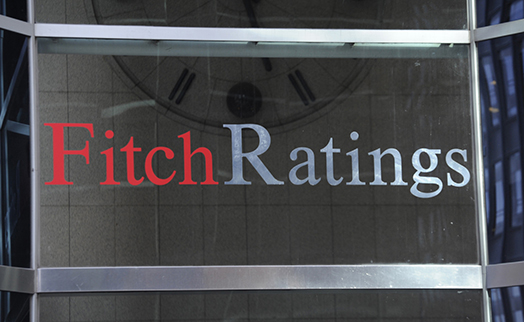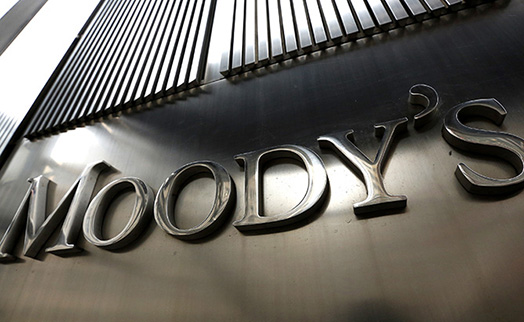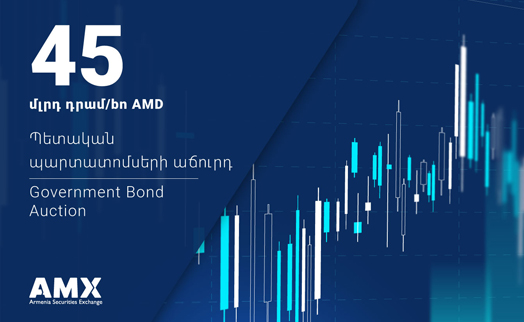25.09.2021 22:37

YEREVAN, September 25, /ARKA/. Fitch Ratings has affirmed Armenia's Long-Term Foreign-Currency Issuer Default Rating (IDR) at 'B+' with a Stable Outlook.
According to Fitch ratings, Armenia's 'B+' IDRs reflect strong per-capita income, governance and business environment indicators relative to peers, as well as a robust macroeconomic and fiscal policy framework and credible commitment to reform that are underpinned by an IMF program.
Public debt is high, with general government debt/GDP jumping 13pp to peak at 67.4% (current 'B' median: 68%) at end-2020, due to the fiscal impact of the pandemic and the Nagorno-Karabakh war's impact on public finances, the fall in GDP and depreciation of the dram.
Fitch forecasts debt/GDP to fall to 60.2% in 2021 on strong nominal GDP growth (13%), narrowing of the fiscal deficit, and strengthening of the dram. Public debt/GDP should continue its gradual downward trajectory to 55% by 2023, guided by the government's commitment to its debt reduction fiscal rule, which will be reinstated from 2022. Foreign currency debt is high at 81% of total government debt in 2021 ('B' median: 63%), and heightens sensitivity to exchange rate fluctuations.
Fitch forecasts the consolidated government deficit to narrow to 3.8% of GDP in 2021 (2020: 5.1%), and further to 2.0% by 2023. Fiscal performance for 7M21 showed an outperformance relative to both the government's and Fitch's forecasts at the last review. Tax revenues rose by 10.5% yoy driven by higher VAT receipts from a rebound in domestic consumption and foreign trade, while investments and other expenditures were under-executed relative to the budget at end-July. The deficit will be financed predominantly by the USD750 million Eurobond proceeds raised in February 2021, but deficit financing in 2022-23 will focus more on domestic sources as the government seeks to reduce external debt and limit vulnerability to dram depreciation.
Real GDP staged a strong, broad-based rebound in 2Q21 of 13.2% yoy, driven by base effects, dynamism in construction, agriculture and services, and supported by strong remittance inflows and continued accommodative policies. Fitch forecasts real GDP growth to recover to 5.5% in 2021 (2020: -7.4%), moderating to 5.3% in 2022 and 4.7% in 2023. Risks to our forecasts are fairly balanced, with the potential for faster economic recovery offsetting risks of renewed economic restrictions from a potential further intensification of the Covid-19 crisis in the context of Armenia's slow vaccination roll-out (under 5% of the population was fully vaccinated by mid-September).
Inflation accelerated to 8.8% yoy in August 2021, above the Central Bank of Armenia's (CBA) target of 4.0%, driven primarily by global pressures on food prices (15.1% yoy), rebounding demand from the 2020 recession, and bottlenecks in supply chains. Fitch forecasts inflation to average 7.4% in 2021, moderating to average 5.0% and 4.0% in 2022-23 as supply chains and production adjust. The CBA has raised its policy rate by a cumulative 300bp to 7.25% between December 2020 and September 2021 in response to domestic inflation pressures. An increase in banks' dram reserve requirements, aimed at enhancing monetary transmission, has also had the effect of tightening monetary conditions. An unexpected monetary tightening by major central banks to curb rising global inflation could lead to pressure on the CBA to further tighten rates.
External finances are a relative weakness compared with 'B' rated peers. A long record of large current account deficits not financed by foreign direct investment flows has resulted in high net external debt (NXD), which we forecast at 55% of GDP at end-2021 ('B' median: 20%).
The narrowing of the goods and services trade deficit in 1Q21, growth in remittance inflows and tightening monetary conditions have led to the dram/US dollar appreciating by 6% in 8M21. Fitch forecasts the recovery of imports as economic activity rises to contribute to a normalising of the current account deficit to relatively high levels of 4.4% of GDP in 2021 and 5.0% in 2022 (2020: 3.8%). Government Eurobond proceeds, emigrant deposits, and modest FDI inflows are expected to finance the deficit, and the residual and a USD175 million-equivalent special drawing rights allocation to raise official reserves to USD3.1 billion by end-2021 (end-2020: USD 2.6 billion). -0-
Read the news first and discuss them in our Telegram
Tags:




























